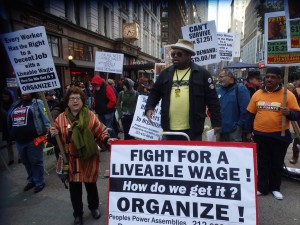Budgeting is the process of creating a plan to spend your money. This spending plan is called a budget. Creating this spending plan allows you to determine in advance whether you will have enough money to do the things you need to do or would like to do.
If you don’t have enough money to do everything you would  like to do, then you can use this planning process to prioritize your spending and focus your money on the things that are most important to you. Here are some reasons you should be more focused on your personal budget and how it effects your life!
like to do, then you can use this planning process to prioritize your spending and focus your money on the things that are most important to you. Here are some reasons you should be more focused on your personal budget and how it effects your life!
1. Keeping Your Eye On The Prize
Budget planning isn’t just going to help you in the short term, it will help you figure out and achieve your long term goals. A budget helps you figure out your long-term goals and work towards them. If you just drift aimlessly through life, tossing your money at every pretty, shiny object that happens catch your eye, how will you ever save up enough money to buy a car, take that trip to Aruba or put a down payment on a house?
2. Keeps You Fro m Spending Money You Don’t Have
m Spending Money You Don’t Have
Far too many consumers spend money they don’t have and we can owe a lot of it to credit cards. As a matter of fact, the average credit card debt per household reached $8,329 in 2008, according to an April 2009 Nilson Report. However, if you create and stick to a budget, you’ll never find yourself in this precarious position. You’ll know exactly how much money you earn, how much you can afford to spend each month and how much you need to save.
3. Your Budget Can Help You Get To Retirement
Let’s say you spend your money responsibly and follow your budget to a “T”. Good for you! But aren’t you forgetting something? As important as it is to spend your money wisely today, it’s also critical to save for your future. A budget can help you do just that. It’s important to build investment contributions into your budget. If you set aside a portion of your earnings each month to donate to your IRA, 401(k) or other retirement funds, you’ll eventually build up a nice, fat nest egg. Although you may have to sacrifice a little now, it will be well worth it down the road
This may sound a little daunting, but there are resources for you to make this easier! The Sub Prime Credit Store helps you with budget planning as well as many many other services to assist with building and maintaining your financial life.
Share
Follow Us!


